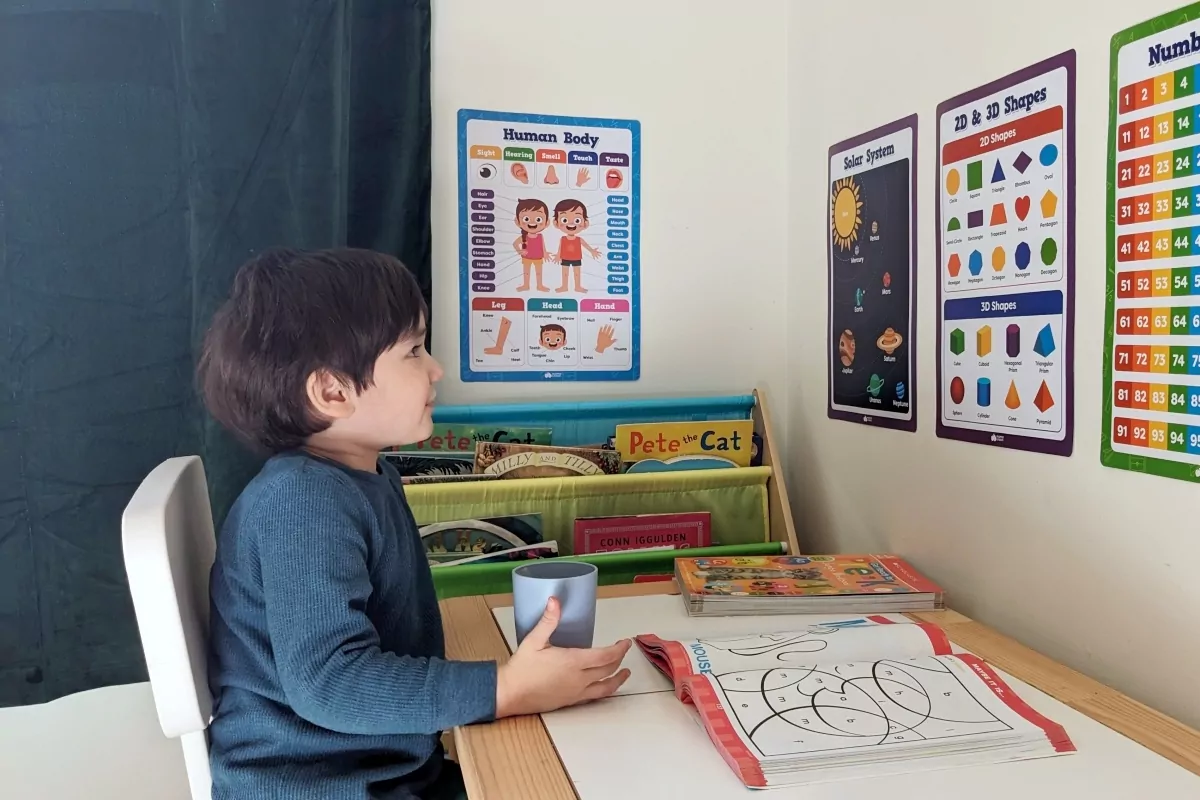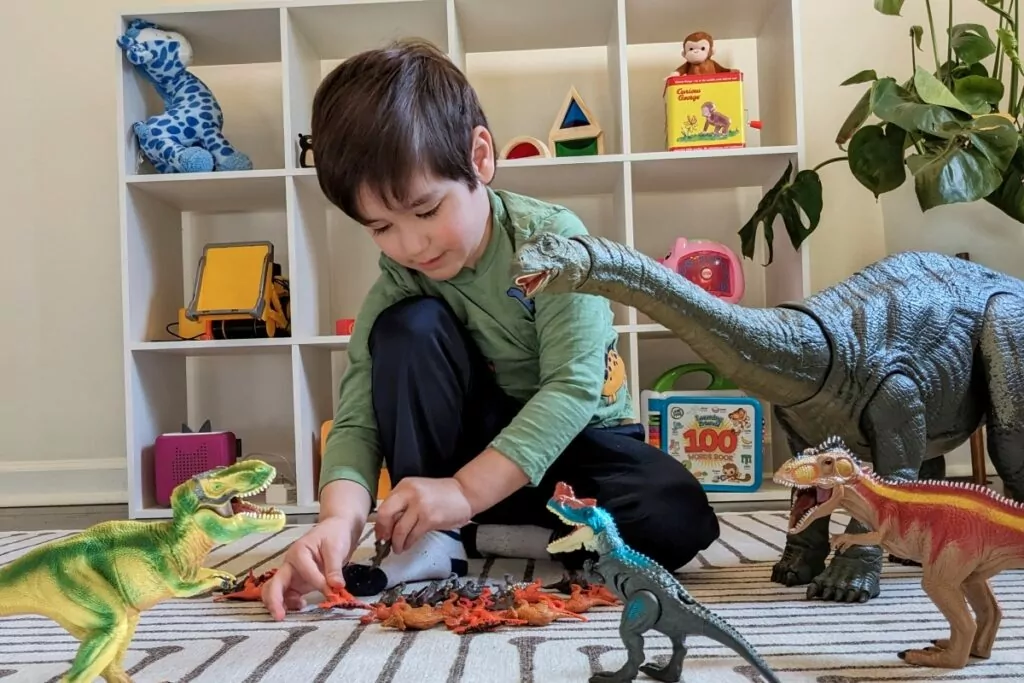Mom Shares 10 Best Tips for Homeschooling an Autistic Child
Homeschooling allows parents to personalize their autistic child’s education to their interests and needs.


Autistic children face unique challenges that their peers don’t typically face. Addressing their behavior, learning, language, and social skills challenges requires an individualized education plan for each child.
Homeschooling could be the right choice for providing the individualized attention they need.
It can seem like a fear-inducing job for those who have never considered homeschooling. Parents wonder if they are smart enough or have the ability to homeschool.
The fact is, any parent is more than adequately equipped to homeschool their children, even their autistic children. Because homeschooling an autistic child presents unique challenges, we have compiled ten tips for homeschooling autistic children to inspire those just getting started or those needing a little encouragement.
Tips for Homeschooling an Autistic Child
1. Work with the child’s topic fixations
Parents are familiar with their autistic children’s fixations. They simply cannot move their attention from their favorite object or topic.
Sometimes these fixations enter the conversation at inopportune times. Often parents look for ways to redirect the child’s attention to something else.
With homeschooling, parents can use the fixations to their advantage. They can be incorporated into the learning program. The ideas are endless; parents can be creative with their lessons and design them around the child’s favorite topic.
Example: if the child is fixated on dinosaurs, read dinosaur stories, count dinosaurs as part of math, learn the history of dinosaurs, and research how a dinosaurs are discovered as part of a science lesson.

2. Encourage socialization with others
Often parents worry most about their children’s social skills development. Parents who homeschool typical needs children worry about it, but those homeschooling special needs children often worry more.
Social skills comprise one area that causes autistic children and children with other special needs to struggle.
One way to help children make connections with others is to practice real-world socialization. Combine their favorite topics with socialization opportunities. Not only will the child practice social skills, but also they will learn about a topic they find interesting.
3. Let the child make some decisions
One of the greatest benefits of homeschooling is that children learn skills that will benefit them throughout their lives. One of those skills can be decision-making skills.
Allowing the child to participate in educational decisions helps them develop critical thinking, confidence, and decision-making skills.
One decision the child can assist with is selecting a curriculum.
- The parent can narrow the search to a few choices that work with the child’s learning style.
- Once they’ve limited the options, they can allow the child to help them choose the curriculum that seems the most interesting to them.
This process will motivate the parent and child to keep going when they experience natural setbacks.
4. Maintain routine and structure but don’t forget breaks
Parents of autistic children know they prefer structure and routine. It makes the chaos of their world feel more orderly. When homeschooling an autistic child, having a schedule will help them feel calmer.
Posting the program on the refrigerator or in another prominent location will help the child thrive in a homeschool atmosphere.
Children on the spectrum also need time to decompress. They need breaks more often than other children to prevent sensory overload.
- To facilitate decompression time, create a space that is only for soothing.
- Ideas of items to include in that space are favorite books, music toys, a rocking chair or hanging indoor swing, pillows, or a favorite blanket.
- You can create an outdoor break area with items such as a water sensory table.
For the ultimate break area, check out our guide on creating an autism sensory room.
5. Allow time for physical exercise
A good homeschool routine includes physical movement. Autistic children find consistent, repetitive motions like swinging to be comforting.
Parents who are homeschooling should incorporate movement into their daily routines.
Having these times provides a break from “bookwork,” which can be mentally taxing for any student. Think of these times of physical activity as a reset button. After children are allowed to move and exercise or play, they can sit still again for more learning.
6. Be flexible.
This tip may seem like it opposes having a routine and structure, but it doesn’t. A structure is a necessity for anyone who is homeschooling an autistic child.
However, flexibility is also necessary because sometimes the curriculum doesn’t fit the child, or the routine is causing stress. Sometimes, meltdowns happen, and there simply won’t be any learning that day.
Being flexible in a homeschool setting means being willing to change directions if necessary.
Example: Johnny has been obsessed with trains for six years, and suddenly he is fixated on the neighbor’s small dog. Parents need to learn to go with the flow of Johnny’s fixations and moods. That ability to be flexible will help them and their child have a better homeschooling experience.
7. Create your own Individualized Education Program (IEP)
No two autistic children will have exactly the same behavior, social, or learning challenges. In the public school system, children identified as being on the autism spectrum have IEPs developed by parents and teachers together.
The problem with many traditional IEPs is that they focus on deficits rather than strengths.
- Before beginning each homeschool year, parents should create their own IEP for their child.
- It doesn’t have to look like the public school model; in fact, it shouldn’t because parents should focus on strengths rather than weaknesses.
Think of this IEP as more of a plan for the year with goals and topics for learning, behavior, and social skills. It should include what the child is interested in learning and what the parents see as needed components of their education.
8. Learn the child’s learning style
Parents who’ve never taught school or taken an education class may not realize that there are four main learning styles.
One way to understand the learning styles is to remember the acronym VARK. VARK stands for Visual, Auditory, Reading/Writing Preference, and Kinesthetic, which are the four learning styles.
Sometimes people will eliminate the Reading/Writing preference and call this the VAK learning styles model. Matching the child’s curriculum with their overall learning style will create a more successful homeschooling experience.
9. Choose the right curriculum.
Homeschool curricula vary in price and scope. Parents can homeschool their children for free or purchase a complete “boxed” curriculum, which includes everything for the year, including scripted lesson plans.
There are curriculum options ranging from relatively inexpensive to much pricier.
- A2Z Homeschooling has a great list of resources to use when homeschooling an autistic child. Many of these resources are apps or free printables for use with the child.
- SplashLearn provides learning games, worksheets, and courses for math and English Language Arts (ELA), and parents can try over 4000 games free online.
- Easy Peasy All-in-One Homeschool is a homeschool mom-created curriculum that is free as long as the student can access a computer and the internet.
10. Teach the whole child
Many times, teachers focus on academics. All children, especially children with autism, need social teaching as well. The benefit of homeschooling the child is the parent can design their program around the exact needs of their child.
If Jimmy understands math with no issues but struggles with social interaction, parents can tip the balance of the curriculum toward teaching social skills. This is another area where focusing on the child’s interests can help provide a successful educational experience.
Example: The music lover could take guitar or drum lessons that take into account their music tastes, or the art lover could take a painting class.
Bonus tip: Keep expectations reasonable
There’s an old saying that “Rome wasn’t built in a day.” The same is true of homeschooling. Parents who homeschool an autistic child may get frustrated by a perceived lack of progress. However, it’s best to remember that homeschooling is a marathon, not a sprint.
Some days, there may be no progress. Others, the child may grow and change in leaps and bounds. It’s important to remember this child is unique, and their progress should only be compared to what they have done in the past, not the family down the street or the child at church.
Resources for parents
- The Homeschool Mom offers a list of resources for those endeavoring to homeschool a child on the autism spectrum. This list of resources provides links for parents to books and other online resources from parents who have successfully homeschooled their autistic children.
- The Applied Behavior Analysis Programs Guide website lists 101 resources for homeschooling children with autism. They include apps, blogs, curricula, podcasts, other websites, and more.
- Texas Home School Coalition also provides a list of appropriate curricula for autistic children on its website.
- Another great resource for parents is the local library. The education section of the library typically has multiple books on homeschooling.
A few last thoughts about homeschooling an autistic child
No one knows a child better than a parent. Parents can diffuse difficult situations and redirect energy toward learning, all while building on their child’s strengths rather than focusing on their weaknesses.
Setting the child up for success is the key to homeschooling success. That includes creating a routine that works for the family, finding a challenging but not frustrating curriculum, and creating a learning space that allows the child to feel safe. Parents should approach homeschooling with patience and the realization that it’s a trial-and-error process.
FAQ
Do parents need an education degree to homeschool their autistic child?
No, parents don’t need a specialized degree to homeschool their children. Parents should check state laws regarding homeschooling because each state has different requirements for homeschoolers.
What is the best curriculum for an autistic child?
The best curriculum for autistic children addresses their educational needs and social development. Choosing a curriculum that teaches to that child’s specific learning style will bring the most success.
Is homeschool curriculum expensive?
A homeschool curriculum can be expensive, but it doesn’t have to be. With creativity and research, parents can often homeschool their children for free or almost free.
How should the homeschooling day be structured?
One of the best things about homeschooling is the parents can structure the day in a way that works best for their family. If their child prefers to sleep late, they can choose to begin school time after lunch. A homeschooling day doesn’t have to look exactly like a day at the local public school.
Written by Kristi Montgomery

Kristi is from the middle of nowhere in Alabama where she is a dedicated wife, mom to 6, and Mimi to 6, and she loves taking care of her family. Kristi has family and friends who live their lives on the autism spectrum, and she finds them to be some of the most interesting people she knows. She embraces the challenge of communicating with them whole-heartedly and has made it a lifelong goal to learn as much as possible about autism and share that information with others.